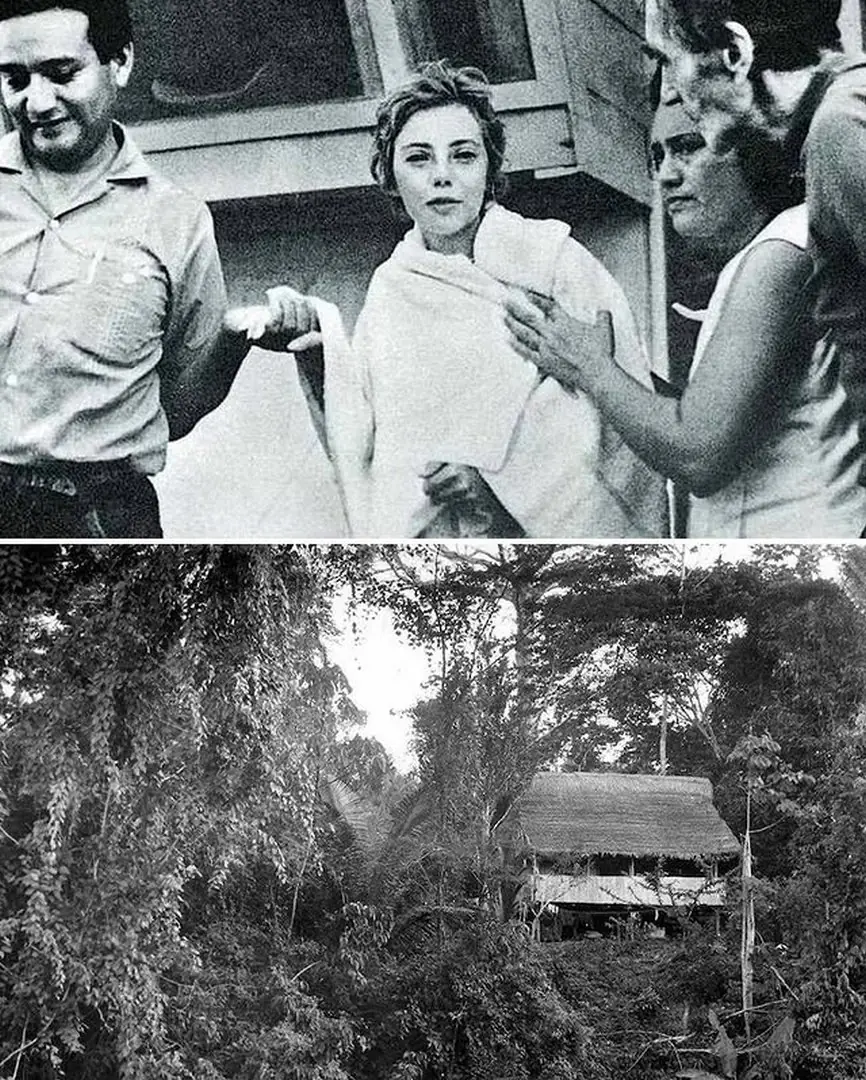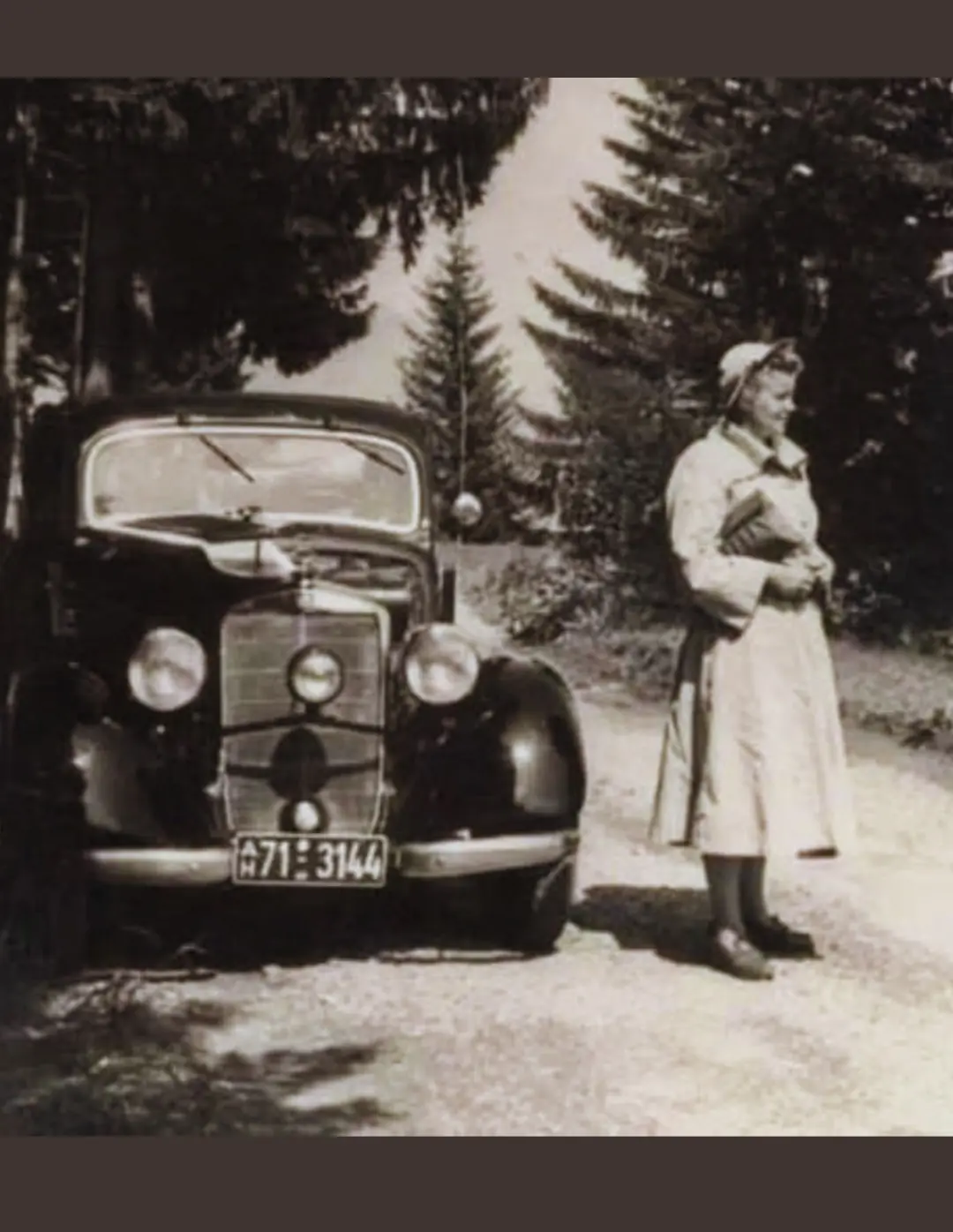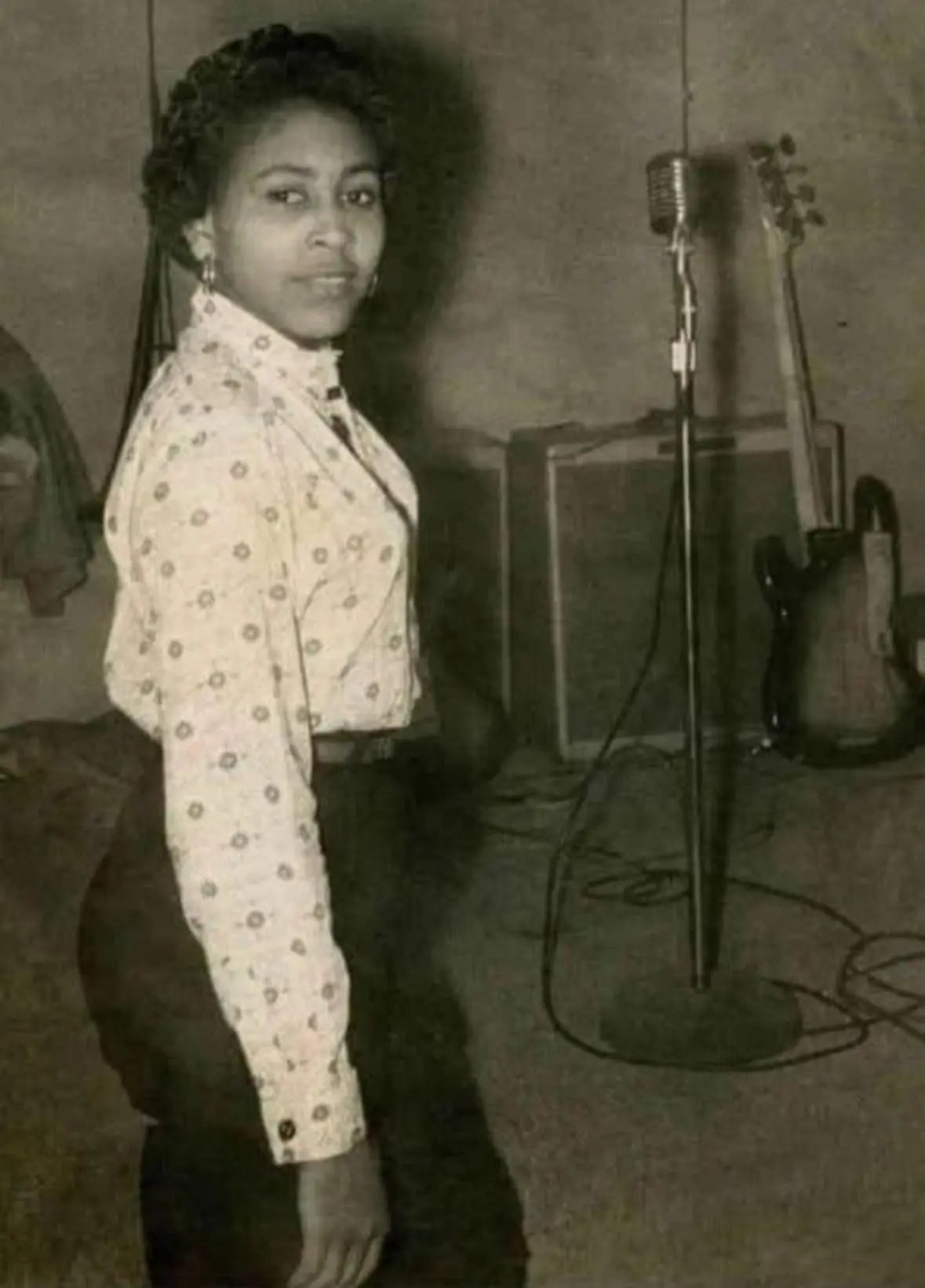
Juliane Koepcke’s Miraculous Survival: The Sole Survivor of a 1971 Plane Crash in the Peruvian Rainforest
Juliane Koepcke survives a 10,000-foot fall in a 1971 plane crash, trekking 11 days in the Peruvian rainforest. Read her story! ❤️🌿

Nina Mae McKinney, born in 1913 in Lancaster, South Carolina, became one of the most significant figures in the early days of black cinema. Known as the "Black Garbo" and celebrated for her beauty, acting, and singing talent, McKinney made history in 1929 with Hallelujah, the first all-black sound musical. Her path, however, was not without its struggles, and despite her early success, her legacy remains largely forgotten by many.
From an early age, McKinney showed remarkable promise. Raised in New York City by her mother after her father’s move to the city, she quickly made her mark in the world of entertainment. At just 15, she adopted the stage name Nina Mae and began performing in Broadway shows, initially as a chorus girl in Blackbirds. Her big break came when she caught the attention of MGM producer and director King Vidor, who cast her in Hallelujah (1929). While the film received limited acclaim at the time, it remains a groundbreaking piece of black theater today.
Despite her early promise, McKinney’s Hollywood career faced insurmountable challenges. Hollywood was unwilling to cast black women in leading roles, especially those as beautiful as McKinney. While the film industry accepted black actresses in supporting roles, it was clear that the full range of possibilities for a glamorous black star was out of reach. Even though McKinney was signed to MGM, her contract was hardly fulfilled—she starred in just two films, Safe in Hell (1931) and Reckless (1935), but in the latter, she didn’t even appear on screen, only providing vocal dubbing for Jean Harlow.
However, her career was not limited to Hollywood. While black actors were marginalized in the U.S., McKinney found greater success in Europe. She left the U.S. and performed on stage and in film across the continent, from Paris to London, Dublin, and Budapest. In Europe, she was revered as a glamorous icon, nicknamed "The Black Garbo" due to her striking resemblance to the famous Swedish actress. Her career flourished in theaters across Europe, and she built a loyal following in cities like Athens, Greece, where she became known as the “Queen of Night Life.”
Yet, despite these successes abroad, McKinney’s story is also one of profound sadness. As Hollywood remained unwilling to embrace her as a leading lady, she turned her efforts to her musical talents. She formed her own band and toured the U.S. after marrying jazz musician Jimmy Monroe. Her time in New York in the 1960s marked a quiet period in her career, and she would ultimately pass away in 1967 at the age of 54 from a heart attack. Tragically, her death went largely unnoticed, with no obituary published in major trade papers or black publications like Jet or Ebony, reflecting the underappreciation she received during her lifetime.
Nina Mae McKinney’s career, though brief, was marked by her immense talent, beauty, and ability to break barriers. Despite the racial limitations of her time, she left a mark on the entertainment world that can still be seen in the early works of black cinema. McKinney’s legacy stands as a reminder of the challenges that early black actresses faced, and how their resilience and brilliance paved the way for future generations of performers. Her story is an important chapter in the history of Hollywood, one that deserves recognition and respect.
Credit to the rightful author for sharing the untold legacy of Nina Mae McKinney, the pioneering African-American actress whose story still resonates today.

Juliane Koepcke survives a 10,000-foot fall in a 1971 plane crash, trekking 11 days in the Peruvian rainforest. Read her story! ❤️🌿

Discover the inspiring story of Mario, a 74-year-old baker in Tuscany who touched the hearts of an entire village with his kindness, dedication, and secret weekly gift to children in need.

A roadside rescue ignites a powerful chain of kindness. Witness a heartwarming story of paying it forward and human connection.

From last-minute casting changes to unscripted laughs—explore the fascinating facts behind the making of Pretty Woman, the iconic film that changed romantic comedies forever.

Explore Tina Turner's inspiring story of resilience, strength, and triumph. Discover how she overcame abu$e, survived challenges, and became a global rock legend.

Charles at Trader Joe’s comforts a widow with flowers and support. Read this heartwarming story! ❤️🛒

A mother's joy in her daughter's "bad" school picture reveals the beauty of authenticity. Celebrate childhood individuality over forced smiles.

A widowed man and a mother in need of help find healing, love, and family in the most unexpected way. A heartwarming journey of second chances, chaos, and deep connection.

A mother with a newborn was crying outside the maternity hospital, not knowing where to go, when she overheard a conversation between two nurses.

Wilson abandons his wife and daughter to start a new life with his young mistress. But things change years later, and when Wilson least expects things to go wrong, he comes face-to-face with his grown-up daughter.

After a difficult separation, Ellie learns to prioritize herself, her career, and her family. Through heartbreak and self-reflection, she finds the strength to move forward.

It came on the morning of my 64th birthday. Plain envelope, no return address, no stamp, just my name, handwritten in familiar slanted print. I almost didn't notice it, it had been slid under the front door, blending in with the bills and circulars.

A sister's struggle with boundaries and familial responsibility leads to a life-changing decision. In a dramatic turn, she walks away from a toxic family dynamic, learning to prioritize herself over her sibling's demands.

A woman is torn between her career ambitions and her relationship, leading to a heart-wrenching decision. Will she sacrifice her dreams for love, or choose her own path? A story of growth, self-discovery, and painful choices.

A wife’s hidden past threatens her marriage after her confession of cheating during their early days together. As trust is shattered, will the couple be able to rebuild their love or face an uncertain future?

A gripping tale of emotional exhaustion and self-discovery in a relationship where one partner constantly sacrifices while the other takes. Will stepping back lead to healing or heartbreak?

A 28-year-old dis@bled woman uncovers her boyfriend's sh0cking plan to drain her dis@bility benefits while hoarding his own income for luxury trips - without her.

A brother’s patience is tested as his sister’s kids demand breakfast every morning, while she sleeps in. A tense confrontation escalates, leading to a dramatic family showdown. Who’s right?

A heated family conflict between two sisters escalates over one’s toxic actions, revealing hidden struggles, secrets, and a life-changing confrontation. Will they ever understand each other? Read the full story to find out.

Juliane Koepcke survives a 10,000-foot fall in a 1971 plane crash, trekking 11 days in the Peruvian rainforest. Read her story! ❤️🌿

Discover the inspiring story of Mario, a 74-year-old baker in Tuscany who touched the hearts of an entire village with his kindness, dedication, and secret weekly gift to children in need.

A roadside rescue ignites a powerful chain of kindness. Witness a heartwarming story of paying it forward and human connection.

From last-minute casting changes to unscripted laughs—explore the fascinating facts behind the making of Pretty Woman, the iconic film that changed romantic comedies forever.

Explore Tina Turner's inspiring story of resilience, strength, and triumph. Discover how she overcame abu$e, survived challenges, and became a global rock legend.

Charles at Trader Joe’s comforts a widow with flowers and support. Read this heartwarming story! ❤️🛒

A mother's joy in her daughter's "bad" school picture reveals the beauty of authenticity. Celebrate childhood individuality over forced smiles.

By incorporating fennel seeds water into your daily routine, you can support your weight loss goals while also benefiting from improved digestion, better skin health, and overall wellness.

The combination of flaxseed gel, aloe vera, cucumber, green tea, and other plant-based ingredients creates a nourishing, anti-aging treatment that hydrates, firms, and revitalizes the skin.

A widowed man and a mother in need of help find healing, love, and family in the most unexpected way. A heartwarming journey of second chances, chaos, and deep connection.

A mother with a newborn was crying outside the maternity hospital, not knowing where to go, when she overheard a conversation between two nurses.

Roasted onion peel and garlic peel treatments offer powerful, natural alternatives to commercial hair dyes, helping you combat grey hair without the risk of chemical side effects.

Wilson abandons his wife and daughter to start a new life with his young mistress. But things change years later, and when Wilson least expects things to go wrong, he comes face-to-face with his grown-up daughter.

After a difficult separation, Ellie learns to prioritize herself, her career, and her family. Through heartbreak and self-reflection, she finds the strength to move forward.

At 18 years old, associated with the bright days of youth, this girl received a diagnosis of premature ovarian failure, making it very difficult to conceive.

Although the air conditioner can still operate, when noticing the following signs, it is advisable to conduct timely inspections and repairs to avoid affecting the usage needs and the health of users.

It came on the morning of my 64th birthday. Plain envelope, no return address, no stamp, just my name, handwritten in familiar slanted print. I almost didn't notice it, it had been slid under the front door, blending in with the bills and circulars.

Onions are a very popular vegetable, especially in spring and summer, when fresh onions are sold in large quantities in the market. At this time, the onion skin is thin and thick, with a lot of water and a crispy, sweet flavor. Don't miss out.

Fish is one of the most important meat ingredients in our country, and compared to other types of meat, fish is much tastier. In addition to its deliciousness, the nutritional value of fish is also high, relatively easy to absorb, making it suitable for c